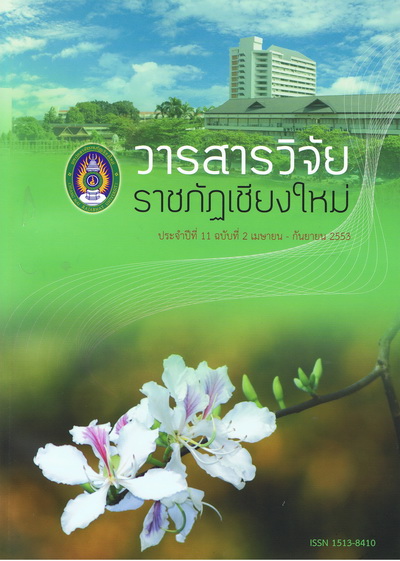ประสิทธิผลการปฏิบัติงานของพนักงานส่วนตำบลระดับผู้บริหาร กรณีศึกษาเฉพาะ กรณี: องค์การบริหารส่วนตำบลในจังหวัดสมุทรปราการ
DOI:
https://doi.org/10.14456/rcmrj.2010.95867Abstract
บทคัดย่อภาษาไทยไม่สมบูรณ์
The Performance Effectiveness of Executive Officers: Case Study of the Subdistrict Administrative or Organizations in Samutprakan Province
The purposes of this research were to study (1) the level of performance effectiveness of executive officers (2) Comparison of the performance effectiveness among executive officers classified by personality factors (3) the relationship between the law and the rules comprehension and the performance effectiveness (4) the relationship between the motives and the performance effectiveness. The samples were 279 the purposive sampling technique was employed to obtain samples for research. The 4 rating scale questionnaire with Cronbach’s Alpha Reliability .89 was used as a tool to collect data from executive officers in local administrative organizations in Samutprakan province. The data were collected and calculated by computer program for social science research. The descriptive statistics were used in this research: percentage, mean, standard deviation and inferential statistics were t-test, One way ANOVA and Pearson’s Product Moment Correlation at significance level .01 and .05
The findings of study were: the performance effectiveness of executive officers at high level. The comparative of the performance effectiveness among executive officers classified by personality factors ; sex, salary per month, experience and position. There was statistically significance difference in performance effectiveness in every factors of personality at the .05 level. The relationships among knowledge in law and rules comprehensive and performance effectiveness of executive officers was significant at .01 level, with the lowest positively relationship (r=.16) and the positively medium relationship between the motivation factors (r=.49).
Downloads
Downloads
How to Cite
Issue
Section
License
1. Articles, information, content, images, etc published in the “Community and Social Development Journal” are copyrighted by the Community and Social Development Journal, Chiang Mai Rajabhat University. In order to properly distribute the articles through print and electronic media, the authors still hold the copyright for the published articles under the Creative Commons Attribution (CC BY) license, which allows the re-distribution of the articles in other sources. References must be made to the articles in the journal. The authors are responsible for requesting permission to reproduce copyrighted content from other sources.
2. The content of the articles appearing in the journal is the direct responsibility of the article authors. The editorial board of the journal does not necessarily agree with or share any responsibility.














